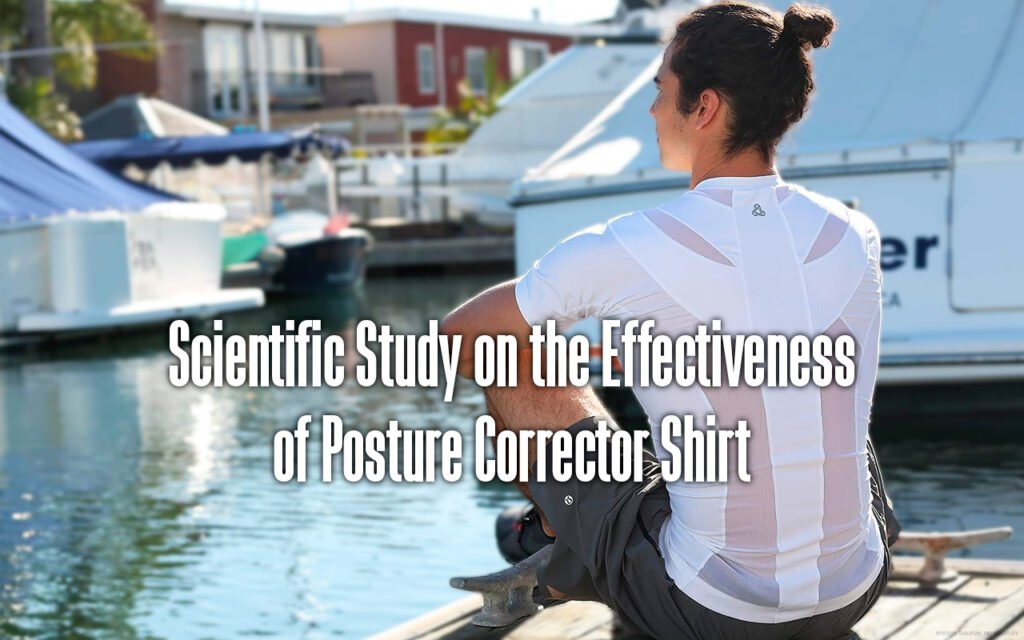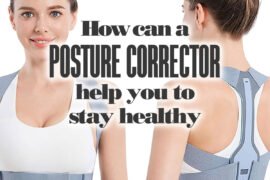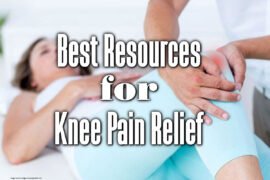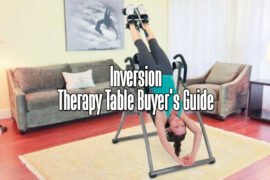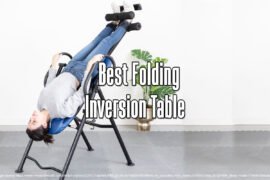Maintaining good posture is important for health and well-being. In recent years, posture-corrector shirts have gained popularity as a potential solution to help individuals improve their posture and alleviate related issues such as back pain and muscle strain. However, with numerous products flooding the market. It’s crucial to understand whether posture-corrector shirts are genuinely effective and backed by scientific study. In this article, we will delve into the research and posture study surrounding posture corrective shirts to determine their efficacy in promoting better posture and overall health.
Understanding Posture Corrector Shirt
Table of Contents
Posture corrector shirt are specialized garments designed to support the upper body, particularly the back and shoulders, to help users maintain proper alignment and posture. They typically feature a combination of elastic materials, compression panels, and adjustable straps, all intended to gently encourage the wearer to stand or sit in an upright position. The idea is that continuous use of these shirts can train the muscles and reinforce good posture habits over time.
The Effectiveness of Posture Corrector Shirt: What the Studies Say
As the awareness of the importance of good posture grows, so does the interest in the effectiveness of posture corrector shirt as a potential solution to address posture-related issues. Various researchers have conducted several posture study to evaluate the effectiveness of these specialized garments in promoting better posture and alleviating associated discomfort. Let’s explore some key posture study and their findings:
A Study Published in the Journal of Physical Therapy Science
In a study conducted by researchers from the Department of Physical Therapy at Daegu University, South Korea, the effects of posture correction using an elastic band were investigated. Though not specifically focused on posture corrector shirt, this posture study is relevant because it examines the impact of a similar supportive intervention. The participants were individuals with poor posture and were instructed to wear an elastic band around their upper back and shoulders for a specific duration daily. The researchers noticed some changes in posture and thoracic kyphosis, which is a forward curve of the upper spine.
This posture study showed a significant improvement in posture and a reduction in thoracic kyphosis in the participants after the intervention period. Supportive devices like posture corrector shirt, which provide similar upper body support, may improve posture.
Research from the Spine Journal
A study published in The Spine Journal investigated the effects of a dynamic elastic shirt on postural alignment and muscle activity. The researchers aimed to determine whether the shirt’s compression and support could influence muscle activation in the upper back and shoulder regions, ultimately leading to improved posture.
The participants in this posture study wore the dynamic elastic shirt for a set duration, and the researchers monitored changes in muscle activity using electromyography (EMG). The posture study found that wearing the shirt led to increased muscle activation in the upper back and shoulder areas compared to baseline measurements without the shirt. These results indicate that posture corrector shirt have the potential to stimulate and support the muscles responsible for maintaining proper posture.
The Journal of Physical Therapy Science’s Investigation on Back Pain
Here is another posture study published in the Journal of Physical Therapy Science that explored the effects of posture correction on chronic back pain. The participants were given a specialized posture corrector shirt designed to encourage a more upright posture. The researchers assessed the impact of the shirt on back pain intensity and overall function.
After several weeks of consistent use, the participants reported reduced back pain intensity and improved overall function. While this posture study primary focus was on back pain reduction, the findings indirectly support the idea that posture-corrector shirts can positively influence posture, potentially contributing to pain relief.
A Randomized Controlled Trial by the University of the Sunshine Coast
A random controlled trial conducted by the University of the Sunshine Coast, Australia. This university aimed to compare the effectiveness of posture corrector shirt with standard postural education in improving posture and reducing pain in office workers. The posture study involved two groups: one group used posture corrector shirt, while the other received conventional postural education.
The posture study results revealed that the group using posture corrector shirt showed greater improvements in posture compared to the group receiving postural education alone. Additionally, this group also reported reduced discomfort associated with prolonged sitting and office work. These findings suggest that effectiveness of posture corrector shirt complement posture education programs, helping individuals maintain better alignment and reduce related discomfort.
Limitations and Considerations
While the posture study mentioned above provide promising results, it’s important to acknowledge some limitations and considerations regarding posture corrector shirt:
1. Individual Variability
The effectiveness of posture corrector shirt can vary from person to person. Each individual may have unique posture habits, body types, and musculoskeletal conditions that influence how well they respond to the intervention. Some individuals may experience significant improvements, while others may see only modest benefits.
- Posture Habits and Severity: Each individual has unique posture habits developed over time. Some individuals may have minor postural issues, while others may have more severe problems, such as rounded shoulders or excessive forward head posture. The severity of the posture issue can influence how well the posture corrector shirt addresses the problem.
- Body Type and Size: Body type and size can affect how well a posture corrector shirt fits and provides support. People with different body shapes and proportions may experience varying levels of comfort and effectiveness with the same shirt. It’s crucial to choose a posture corrector shirt that is adjustable and designed to accommodate various body types.
- Musculoskeletal Condition: Underlying musculoskeletal conditions, such as scoliosis or arthritis, can impact how the body responds to wearing a posture corrector shirt. In some cases, these conditions may limit the effectiveness of the shirt or individuals with certain conditions may need specialized posture corrector options designed to address their specific needs.
- Comfort and Tolerance: Wearing a posture corrector shirt involves having a foreign garment on the body, which may take some getting used to. Different individuals may have varying levels of comfort and tolerance with wearing the shirt for extended periods. Some may adapt quickly, while others may find it challenging to wear the shirt consistently due to discomfort or irritation.
- Lifestyle and Activity Level: An individual’s lifestyle and activity level can impact the effectiveness of posture corrector shirt. People with sedentary lifestyles may benefit from wearing the shirt during long hours of sitting. While those with more active lifestyles may need to consider the shirt’s comfort and support during movement and exercise.
- Compliance and Consistency: The success of using a posture corrector shirt heavily relies on user compliance and consistency. For the shirt to be effective, it needs to be worn regularly and as recommended. People who find it challenging to adhere to consistent use may not experience the full benefits of the shirt.
- Expectations and Goals: Different individuals may have varying expectations and goals regarding the use of a posture corrector shirt. Some may seek immediate results and a complete posture transformation, while others may aim for gradual improvements and pain relief. Managing expectations and understanding that progress may vary can be essential in evaluating the effectiveness of the shirt.
- Personal Preference: Personal preferences affect how well individuals respond to using a posture corrector shirt. Some may prefer the feeling of compression and support, while others may find it restrictive. Personal preferences can influence how often a person uses the shirt and its effectiveness.
2. Short-Term vs Long-Term Effects
Many posture study on posture corrector shirts have relatively short intervention periods, often lasting a few weeks. While these posture study show promising results in the short term, the long-term effects of using posture corrector shirts require further investigation. Continued use and maintenance of proper posture habits beyond the intervention period are likely essential for sustaining benefits over time.
Short-Term Effects:
a. Immediate Posture Correction: One of the immediate benefits of using a posture corrector shirt is its instant posture correction. When worn, the shirt gently reminds the wearer to maintain proper alignment, preventing slouching or hunching. Users may notice a more upright posture as soon as they put on the shirt.
b. Reduced Muscle Tension: Posture corrector shirts can help alleviate muscle tension and fatigue in the upper back, shoulders, and neck by supporting these areas. The compression from the shirt can promote blood flow and relaxation of tense muscles, leading to short-term relief.
c. Increased Awareness: Wearing a posture corrector shirt can increase awareness of one’s posture throughout the day. As individuals feel the gentle resistance of the shirt when they slouch, they become more conscious of their posture habits, even when not wearing the garment.
d. Initial Comfort and Support: Some users may experience immediate comfort and support from wearing a posture corrector shirt. The feeling of support can offer relief for those who often experience discomfort from poor posture.
Long-Term Effects:
a. Muscle Memory and Habits: The long-term effectiveness of posture corrector shirt lies in their ability to aid muscle memory and develop better posture habits. Consistent use helps the shirt retrain the muscles to maintain proper alignment, even without the garment. Over time, individuals may naturally adopt a better posture.
b. Strengthening Postural Muscles: Regular use of a posture corrector shirt can contribute to the strengthening of postural muscles, including those in the back, shoulders, and core. As the muscles become stronger, they can better support the spine and maintain correct alignment.
c. Improved Postural Alignment: The cumulative effect of wearing a posture corrector shirt over an extended period can lead to improved postural alignment. Users may experience reduced forward head posture, rounded shoulders, and other common postural issues.
d. Pain Relief: Long-term use of posture corrector shirts may relieve back pain and discomfort associated with poor posture. Muscle and joint stress is reduced as the body adjusts to better alignment, potentially alleviating chronic pain.
e. Enhanced Well-Being: Improved posture can positively impact overall well-being. Beyond physical benefits, individuals may experience increased confidence, reduced stress, and improved self-esteem.
f. Dependence Reduction: Ideally, the long-term goal of using a posture corrector shirt is to reduce dependence on the garment. As individuals develop better posture habits, they may likely rely less on the shirt and more on their body’s natural ability to maintain proper alignment.
g. Sustained Benefits: While short-term effects are evident when wearing the posture corrector shirt, the true value lies in the sustained benefits over time. Consistent use and adherence to better posture practices contribute to long-term improvements in posture and overall musculoskeletal health.
3. Compliance and Comfort
The success of effectiveness of posture corrector shirt depends on user compliance, which can be challenging for some individuals. Wearing a posture corrector shirt consistently, as recommended, is crucial for achieving the desired results. However, discomfort or irritation from the garment may discourage some users from using it regularly.
The Importance of Compliance:
a. Consistent Use for Effective Results: The success of effectiveness of posture corrector shirt depends on the user’s compliance in wearing the garment consistently. For the shirt to be effective in promoting better posture, it needs to be worn regularly as recommended by the manufacturer or healthcare professional.
b. Building Muscle Memory: Consistent use of the posture corrector shirt helps build muscle memory. The shirt reinforces good posture habits by consistently providing gentle reminders to maintain proper alignment. It can eventually become ingrained in the user’s daily activities.
c. Gradual Progression: Compliance ensures gradual progress in improving posture. Users may notice incremental improvements over time as they continue to wear the shirt. The more consistent the use, the more likely individuals will experience the full benefits of the posture corrector shirt.
d. Overcoming Posture Challenges: For some individuals, maintaining good posture may be challenging due to long-standing habits or muscle imbalances. Compliance with wearing the posture corrector shirt can aid in overcoming these challenges by providing external support and guidance.
e. Commitment to Long-Term Posture Improvement: Posture correction is an ongoing process, and consistent use of the shirt reflects a commitment to achieving long-term posture improvement and overall musculoskeletal health.
Comfort Considerations:
a. Ensuring Regular Wear: Comfort is a critical factor in promoting compliance. If a posture corrector shirt is uncomfortable or causes irritation, users may be less inclined to wear it regularly. Ensuring a comfortable fit and material is essential in encouraging users to use the shirt consistently.
b. Breathable and Skin-Friendly Materials: Posture corrector shirts made from breathable and skin-friendly materials enhance comfort during wear. Proper ventilation helps prevent excessive sweating and discomfort, especially during extended periods of use.
c. Adjustable Straps and Fit: A well-fitted posture corrector shirt with adjustable straps ensure a customized and comfortable fit for various body types. The adjustability allows users to find the optimal level of support without compromising comfort.
d. Freedom of Movement: A comfortable posture corrector shirt should support natural body movements without restriction. Users should be able to easily perform daily activities, including walking, sitting, and standing, while wearing the garment.
e. Gradual Adaptation: For some individuals, wearing a posture corrector shirt may take time for the body to adapt. It’s essential to allow for gradual adaptation and start with shorter wear durations before gradually increasing the time.
f. User Feedback and Reviews: User feedback and reviews may provide valuable insights into the comfort level of a posture corrector shirt. Checking customer reviews can help individuals make informed decisions when selecting a product that prioritizes comfort.
4. Not a Standalone Solution
Posture corrector shirts are not a standalone solution for posture issues. While they can provide support and gentle reminders to maintain proper alignment. They should be viewed as a part of a comprehensive approach to improving posture. Incorporating other posture-enhancing practices, such as targeted exercises, stretching, and ergonomic adjustments, is crucial for long-term effectiveness.
- Addressing Underlying Issues: Posture corrector shirts can be valuable tools in promoting better posture, but they do not address the underlying issues that may contribute to poor posture. Factors such as muscle imbalances, weak core muscles, or improper ergonomics can all play a role in posture problems. To achieve long-term improvement, these underlying issues must be addressed.
- Complementing Other Posture Practices: Posture corrector shirts work best when used with other posture-enhancing practices. Incorporating targeted exercises, stretching routines, and core strengthening workouts can help improve muscle strength and flexibility, contributing to better posture.
- Active Lifestyle: Leading an active lifestyle is important for overall health and well-being, including maintaining good posture. Engaging in regular physical activity, like swimming, walking, or yoga. It helps keep the muscles and joints healthy and supports proper posture.
- Ergonomic Adjustments: Making ergonomic adjustments in daily activities, such as setting up an ergonomic workstation or adjusting the height of a computer monitor. It can significantly impact posture during work hours.
- Mindful Posture Practices: Developing mindfulness about posture throughout the day can make a significant difference. Being aware of posture during sitting, standing, and walking can help prevent slouching and encourage better alignment.
- Core Strengthening: Strengthening the core muscles, including the abdominals and back muscles, is vital for maintaining a stable and well-supported spine. Exercises that target the core can complement the use of a posture corrector shirt.
- Gradual Independence from the Shirt: The ultimate goal of using a posture corrector shirt should be to develop enough strength and awareness to maintain good posture without relying solely on the garment. The shirt can serve as a tool to aid in building better posture habits, but the aim is for individuals to become less dependent on it gradually.
- Healthcare Professional Guidance: Consulting with a healthcare professional or posture expert can provide personalized guidance and a comprehensive approach to posture improvement. These experts can identify individual posture issues, recommend appropriate exercises. Ensure that using a posture corrector shirt aligns with an individual’s specific needs.
- Lifestyle and Behavioral Changes: Addressing lifestyle and behavioral factors contributing to poor posture is essential. Limiting prolonged sitting, avoiding slouching while using electronic devices, and incorporating regular breaks for movement can all support better posture.
5. Gradual Adaptation
It may take time for the body to adapt to wearing a posture corrector shirt. In the initial stages, some individuals may find it challenging to adjust to the sensation of the shirt and the posture correction it provides. Gradual and patient adaptation is key to increasing comfort and compliance.
- Initial Adjustment Period: When first using a posture corrector shirt, individuals may need an adjustment period to get accustomed to wearing the garment. The feeling of having additional support and the slight adjustment to the body’s posture can take some time to become familiar.
- Start with Short Durations: To ease into using the posture corrector shirt, it is advisable to start with short durations of wear. Wearing the shirt for just a few minutes initially allows the body to gradually acclimate to the feeling of support and compression.
- Increase Wear Time Gradually: Over time, individuals can gradually increase the duration of wear. As the body becomes more comfortable with the posture corrector shirt. Users can extend the periods of use until they can comfortably wear it for more extended periods.
- Comfortable Tightness: Adjust the straps of the posture corrector shirt to achieve comfortable tightness. The shirt should be snug enough to provide support but not so tight as to cause discomfort or restrict breathing. Finding the right balance ensures that the shirt is effective without being overly restrictive.
- Listen to Your Body: Pay attention to any sensations or discomfort while wearing the posture corrector shirt. If there is any pain, chafing, or breathing difficulties, the fit or duration of wear may need to be adjusted. Listening to the body’s signals is crucial for finding the right approach to using the shirt.
- Incorporate into Daily Routine: Gradual adaptation involves gradually incorporating the effectiveness of posture corrector shirt into daily activities. Start with wearing the shirt during shorter periods, such as while sitting at a desk or during light activities. Then progress to wearing it during more extended periods or while engaging in physical activities.
- Use During Low-Intensity Activities: Initially, use the posture corrector shirt during low-intensity activities or when sitting for extended periods. As comfort and adaptation improve, individuals can explore wearing the shirt during more dynamic activities or exercises.
- Consistent Practice: Consistency is key to achieving gradual adaptation. Regularly incorporating the posture corrector shirt into daily routines, even for short periods. It helps the body adapt to the changes in posture and support.
- Complement with Posture Exercises: To enhance adaptation and long-term benefits, complement the use of the posture corrector shirt with specific posture exercises. Strengthening the core and back muscles can contribute to better posture and support the body in maintaining proper alignment.
- Monitor Progress: Keep track of how the body responds to the posture corrector shirt over time. Note any improvements in posture, comfort, and overall well-being. Monitoring progress can provide motivation and help users evaluate the effectiveness of the shirt.
6. Underlying Health Conditions
Individuals with specific musculoskeletal conditions, spinal issues, or other medical concerns should consult a healthcare professional before using a posture corrector shirt. These garments may not be suitable for everyone, and in some cases, they could exacerbate existing health issues.
- Consultation with Healthcare Professionals: Before using a posture corrector shirt, individuals with underlying health conditions should seek guidance from healthcare professionals. Medical conditions such as scoliosis, osteoporosis, arthritis, or other musculoskeletal issues may affect the garment’s appropriateness and safety.
- Individualized Approach: Each individual’s health condition is unique, and what works for one person may not be suitable for another. Healthcare professionals can provide personalized recommendations and suggest alternative posture improvement strategies based on an individual’s specific needs.
- Safety and Effectiveness: For individuals with certain health conditions, using a posture corrector shirt may not be safe or effective. In some cases, wearing a posture corrector shirt could exacerbate existing issues or cause discomfort.
- Specialized Posture Corrector Options: Individuals with specific health conditions may require specialized posture corrector shirts designed to address their unique needs. These specialized options may offer targeted support and adapt to the challenges posed by the health condition.
- Proper Fit and Support: When dealing with health conditions that affect the spine or joints, ensuring a proper fit and the right level of support is crucial. Ill-fitting garments or excessive pressure on certain areas could lead to further complications.
- Posture Expert Evaluation: Consulting with a posture expert or physical therapist with experience in managing musculoskeletal conditions can provide valuable insights. These professionals can recommend appropriate posture correction strategies, exercises, and supportive garments tailored to an individual’s health condition.
- Monitoring Progress: Regularly monitoring how the body responds to using a posture corrector shirt is essential. Individuals should pay attention to any discomfort, pain, or changes in symptoms. If using the shirt worsens the health condition or leads to new issues. It should be discontinued immediately, and further consultation with a healthcare professional is warranted.
- Integrative Approach: For individuals with underlying health conditions, posture correction should be part of an integrative approach to overall health and well-being. This approach may include targeted exercises, physical therapy, pain management strategies, and lifestyle adjustments to support posture improvement while managing the underlying condition.
- Gradual Adaptation: Individuals with health conditions may need a more gradual approach to use a posture corrector shirt. Starting with shorter durations of wear and slowly increasing the time can allow the body to adapt safely to the garment’s support.
- Long-Term Monitoring: Ongoing communication with healthcare professionals is essential for individuals with underlying health conditions. Regular check-ups and assessments can help monitor progress, adjust as needed, and ensure that posture correction strategies remain appropriate.
7. Posture Awareness
While posture corrector shirts can provide external support, they may not necessarily address the underlying cause of poor posture. It often involves factors such as muscle imbalances, weak core muscles, or lifestyle habits. Users should remain mindful of their posture and actively work on improving it beyond the use of the shirt.
- Understanding Posture: Posture awareness begins with understanding what good posture entails. It refers to the alignment of the body in various positions, such as standing, sitting, and walking, in which the spine is properly aligned and the muscles and joints are well-supported. Being aware of the natural curves of the spine and maintaining proper alignment is crucial for optimal posture.
- Mindfulness of Daily Activities: Posture awareness involves being mindful of posture during daily activities. Whether sitting at a desk, standing in line, or using electronic devices, individuals should be conscious of their posture and make necessary adjustments to maintain proper alignment.
- Correcting Poor Habits: Individuals can identify and correct poor posture habits by being posture aware. Slouching, hunching over, or jutting the head forward are common habits that can strain the muscles and lead to posture-related issues. Regularly checking and correcting posture helps break these habits.
- Implementing Ergonomic Practices: Being posture aware also extends to considering ergonomics in various environments. Ergonomic adjustments in the workplace, such as setting up an ergonomic chair, desk, and computer monitor at the appropriate height, can significantly impact posture during long hours of work.
- Using Posture Reminders: Posture awareness can be reinforced through the use of posture reminders. For example, setting alarms or reminders on electronic devices can prompt individuals to check their posture throughout the day.
- Mind-Body Connection: Posture awareness fosters a stronger mind-body connection. By being mindful of how the body feels and moves, individuals can better understand their posture habits and make aware efforts to improve them.
- Incorporating Posture Exercises: Engaging in posture exercises, such as stretching and strengthening routines, can improve posture awareness. These exercises help individuals become more attuned to their body’s alignment and promote better postural habits.
- Practicing Body Scanning: Regularly performing body scans can enhance posture awareness. Taking a few moments to mentally scan the body from head to toe. Checking for tension or misalignment, helps individuals become more in tune with their posture.
- Applying Posture Corrections: Posture awareness is about recognizing poor posture and actively making corrections. Individuals can apply gentle adjustments, such as pulling the shoulders back and aligning the ears with the shoulders, to maintain proper alignment.
- Improved Well-Being: Being posture aware is not only beneficial for physical health but also for overall well-being. Good posture can boost confidence, reduce stress, and improve energy levels, leading to enhanced overall quality of life.
8. No Substitute for an Active Lifestyle
Posture corrector shirts are not a substitute for an active lifestyle. Regular physical activity, including exercises targeting posture and core strength, is crucial for achieving lasting improvements in posture and overall health.
- Supporting Musculoskeletal Health: Regular physical activity plays a crucial role in supporting musculoskeletal health, including the muscles, bones, and joints that contribute to posture. Engaging in physical activities helps strengthen the muscles that support the spine, promoting better posture and reducing the risk of postural issues.
- Strengthening Core Muscles: The core muscles, including the abdominals, back muscles, and pelvic floor, are essential for maintaining stability and proper alignment of the spine. Activities that target these core muscles, such as core exercises, yoga, and pilates. This activities can significantly improve posture & strain on the neck and back.
- Enhancing Flexibility: An active lifestyle that includes regular stretching exercises helps improve flexibility and range of motion. Increased flexibility supports better posture by allowing the body to move more freely and maintain proper alignment during various activities.
- Counteracting Sedentary Habits: Prolonged periods of sitting, common in sedentary lifestyles, can lead to poor posture and musculoskeletal imbalances. Regular physical activity helps counteract the negative effects of prolonged sitting by engaging the muscles and promoting dynamic movements.
- Promoting Spinal Health: Physical activity, particularly weight-bearing exercises like walking and jogging, can promote spinal health by encouraging the absorption of essential nutrients into the spinal discs. Adequate hydration and movement help nourish the discs, maintaining their integrity & reducing the risk of spinal issues.
- Improving Body Awareness: Physical activities that require body awareness, balance, and coordination, such as dancing, martial arts, or certain sports, can enhance overall posture. These activities teach individuals to be mindful of their body’s alignment and movement, leading to better posture habits.
- Reducing Stress and Tension: Regular physical activity can reduce stress and tension, which often manifest in tight muscles and poor posture. Exercise releases endorphins, the body’s natural feel-good chemicals, which can positively impact posture and overall well-being.
- Encouraging Posture Throughout the Day: An active lifestyle encourages individuals to maintain better posture throughout the day. The awareness of the body’s alignment during physical activities can carry over into daily tasks. It leads to improved posture habits during both active and sedentary periods.
- Boosting Energy and Vitality: Regular physical activity boosts energy levels and vitality, making individuals more inclined to engage in daily activities with better posture. Feeling more energetic and motivated can lead to a positive cycle of maintaining an active lifestyle and improved posture.
- Complementing Posture Corrector Shirts: An active lifestyle complements the effectiveness of posture corrector shirt by reinforcing the muscle memory and habits established through physical activity. While posture corrector shirts provide external support, an active lifestyle helps build the internal strength and endurance needed to maintain good posture independently.
9. Size and Fit
Ensuring a proper fit is important for the effective functioning of a posture corrector shirt. Users should carefully follow sizing guidelines and adjust the straps to fit their body shape comfortably. An ill-fitting garment may not provide the intended support and could lead to discomfort.
- Accurate Sizing Measurements: When selecting a posture corrector shirt, accurate sizing measurements are essential. Most manufacturers provide sizing charts or guidelines that consider factors such as chest circumference, waist size, and height to help users choose the appropriate size for their bodies.
- Avoiding Incorrect Fit: Choosing the wrong size can lead to ineffective posture correction and discomfort. A posture corrector shirt that is too tight may cause breathing difficulties, skin irritation, or chafing. On the other hand, a shirt that is too loose may not provide the necessary support for posture improvement.
- Adjustable Straps: Opting for a posture corrector shirt with adjustable straps is advantageous, especially if body measurements fall in between two sizes. Users can personalize the fit with adjustable straps, guaranteeing the utmost comfort and support.
- Targeted Support: Different posture corrector shirts may offer varying degrees of support and target specific upper body areas. Some may focus on shoulder retraction, while others support the overall back and spine. Choosing a shirt that offers targeted support based on individual posture needs can lead to more effective results.
- Proper Alignment: A well-fitted posture corrector shirt should encourage proper alignment of the spine, shoulders, and neck. The shirt should gently guide the body into a more upright position without forcing it into an unnatural posture.
- Comfort and Breathability: Comfort is essential for regular and extended wear. Look for posture corrector shirts made from breathable materials that allow proper ventilation and prevent excessive sweating. A comfortable fabric ensures that individuals are more likely to wear the shirt consistently.
- Full Range of Motion: The posture corrector shirt should provide support without limiting the body’s range of motion. Users should be able to move their arms, shoulders, and upper body freely while wearing the shirt.
- Skin-Friendly Materials: Consider choosing a posture corrector shirt made from skin-friendly materials to prevent irritation or allergic reactions. Soft and smooth fabrics minimize the risk of chafing or discomfort during wear.
- Trying Before Buying: If possible, trying on the posture corrector shirt before purchasing it can provide a better sense of its fit and feel. Some retail stores may offer fitting rooms where individuals can test the garment.
- Reviews and Feedback: Reading our customer reviews and feedback can offer valuable insights into the sizing and fit of specific posture corrector shirts. Hearing from others who have already used the product can help inform the decision-making process.
FAQs
Q1. Is there scientific studies supporting the effectiveness of posture corrector shirts in improving posture?
Yes, scientific studies and research have explored the effectiveness of posture corrector shirts in improving posture. These posture study often focus on their impact on postural alignment, muscle activation, and posture-related discomfort.
Q2. Do posture corrector shirts provide long-term benefits for posture improvement?
Some posture study suggest that posture-corrector shirts offer short-term benefits in promoting better posture habits and muscle engagement. However, long-term benefits may depend on consistent usage and complementing exercises to strengthen supporting muscles.
Q3. How do posture corrector shirts work to improve posture?
Posture corrector shirts provide gentle and consistent pressure to the upper body, encouraging the wearer to maintain proper alignment. They can also act as a posture reminder, helping individuals become more conscious of their posture throughout the day.
Q4. Are posture corrector shirts effective for all types of posture issues?
Posture corrector shirts are generally effective for individuals with mild to moderate posture issues, including slouching and rounded shoulders. However, traditional posture correctors or other treatments may be more suitable for severe postural abnormalities or specific medical conditions.
Q5. What does scientific research say about the comfort and usability of posture corrector shirts?
Research on the comfort and usability of posture-corrector shirts has indicated that they are generally well-tolerated by users. Many posture study report positive feedback on the lightweight and breathable designs, allowing for comfortable wear throughout the day. However, individual preferences and fit may vary, affecting overall comfort.
Conclusion
Based on the existing research and posture study, posture corrector shirts show promising results in promoting better posture and relieving associated discomfort. However, it’s essential to recognize that individual experiences may vary. A long-term effectiveness relies on consistent use and other lifestyle factors. If you’re considering using a posture corrector shirt, it’s advisable to consult with healthcare persons to make sure it’s suitable for your specific needs.
As with any product or intervention, combining the use of a posture corrector shirt with other healthy habits like regular exercise, ergonomic adjustments, and mindful posture practices can further enhance its benefits. By understanding the science behind posture corrector shirts and making informed decisions. Individuals can take proactive steps toward improving their posture and overall well-being.
If you are interested in discovering the best posture corrector shirts available in 2024, I invite you to read my article titled “Best Posture Corrector Shirts For 2024.” This comprehensive guide provides an in-depth review and comparison of top-rated posture corrector shirts, helping you make an informed decision to support your posture improvement journey. Click here to access the article.


